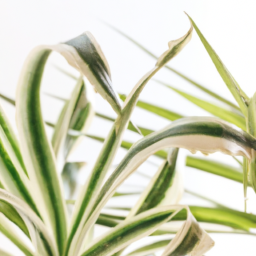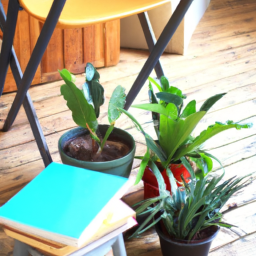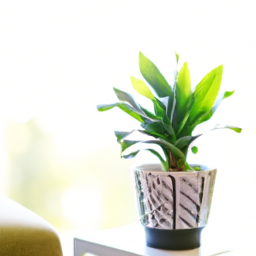
Have you ever wondered about the difference between indoor and outdoor plants? While both types of plants have their own unique characteristics and requirements, understanding the distinctions between them can help you choose the right plants for your home or garden. In this blog post, we will explore the key differences between indoor and outdoor plants, including their care needs, growth patterns, and environmental preferences. Whether you are a seasoned gardener or just starting out, this information will help you make informed decisions when it comes to selecting and caring for your plants. So, let’s dive in and learn more about the fascinating world of indoor and outdoor plants!
Benefits of Indoor Plants vs. Outdoor Plants
Indoor Plants
When it comes to indoor plants, there are several benefits that make them a popular choice for many homeowners. One of the main advantages of indoor plants is their ability to improve air quality. Indoor plants have been shown to remove toxins from the air and increase oxygen levels, creating a healthier living environment for you and your family. In addition, indoor plants can help reduce stress and anxiety, as their presence has been linked to improved mood and overall well-being.
Another benefit of indoor plants is their ability to add beauty and style to your home. With a wide variety of plant species to choose from, you can easily find indoor plants that complement your decor and enhance the aesthetic appeal of your living space. Indoor plants also require less maintenance compared to outdoor plants, making them a convenient option for those with busy schedules.
Furthermore, indoor plants can help regulate humidity levels in your home, creating a more comfortable environment for you and your family. By releasing moisture into the air through a process called transpiration, indoor plants can prevent dryness and reduce the risk of respiratory problems. Overall, indoor plants offer a range of benefits that can enhance both the physical and emotional well-being of those who incorporate them into their living spaces.
Outdoor Plants
On the other hand, outdoor plants also offer a variety of benefits that make them a valuable addition to any garden or outdoor space. One of the main advantages of outdoor plants is their ability to thrive in natural sunlight and fresh air. Outdoor plants require direct sunlight to photosynthesize and grow, making them a great option for those who have a garden or outdoor space that receives ample sunlight throughout the day.
Outdoor plants also provide habitat and food for wildlife, such as birds, bees, and butterflies, helping to support biodiversity and create a more sustainable ecosystem. By planting a diverse range of outdoor plants, you can attract a variety of beneficial insects and pollinators that contribute to the health of your garden and the surrounding environment.
In addition, outdoor plants can help improve soil quality and prevent erosion, as their roots help hold soil in place and absorb excess water. By planting a mix of perennial and annual plants, you can create a dynamic outdoor space that changes with the seasons and provides year-round interest and beauty. Overall, outdoor plants offer a range of benefits that can enhance the natural beauty and functionality of your outdoor space.
In conclusion, both indoor and outdoor plants offer unique benefits that can enhance the beauty and functionality of your living spaces. Whether you choose to incorporate indoor plants into your home or cultivate a garden full of outdoor plants, you can enjoy the many advantages that plants have to offer. By understanding the differences between indoor and outdoor plants, you can make informed decisions about which plants are best suited for your specific needs and preferences.

Care Tips for Indoor Plants vs. Outdoor Plants
Indoor Plants
When it comes to caring for indoor plants, there are a few key differences to keep in mind compared to outdoor plants. One of the main factors to consider is the amount of sunlight that indoor plants receive. Since they are typically kept inside, they may not get as much direct sunlight as outdoor plants. It’s important to place indoor plants near a window where they can get some natural light, but be careful not to expose them to too much direct sunlight, as this can cause the leaves to burn.
Another important aspect of caring for indoor plants is watering. Since indoor plants are not exposed to the elements like outdoor plants, they may not need to be watered as frequently. It’s important to check the soil moisture level before watering indoor plants, as overwatering can lead to root rot. Additionally, indoor plants may benefit from being misted occasionally to increase humidity levels, especially during the dry winter months.
In terms of temperature, indoor plants are typically kept in a controlled environment, so they are not exposed to extreme temperature fluctuations like outdoor plants. It’s important to keep indoor plants away from drafty windows or doors, as sudden temperature changes can stress the plants. Most indoor plants prefer temperatures between 60-75 degrees Fahrenheit, so be sure to keep them in a comfortable environment.
Outdoor Plants
Outdoor plants have different care requirements compared to indoor plants, primarily due to their exposure to the elements. One of the main differences is the amount of sunlight that outdoor plants receive. Outdoor plants are typically exposed to full sunlight for a large portion of the day, so it’s important to choose plants that are suited to the specific light conditions in your garden. Some plants thrive in full sun, while others prefer partial shade, so be sure to research the light requirements of your outdoor plants.
Watering outdoor plants can also be different from indoor plants, as they may need to be watered more frequently due to exposure to sunlight and wind. It’s important to water outdoor plants deeply and infrequently, rather than shallowly and frequently, to encourage deep root growth. Be sure to water outdoor plants in the early morning or late evening to minimize evaporation and reduce the risk of fungal diseases.
Temperature fluctuations can also impact outdoor plants, especially during extreme weather conditions. It’s important to choose plants that are suited to your specific climate zone, as some plants may not be able to withstand extreme heat or cold. Mulching around outdoor plants can help regulate soil temperature and retain moisture, which can help protect plants from temperature fluctuations.
In conclusion, caring for indoor plants and outdoor plants requires different approaches due to their unique environments. By understanding the specific needs of each type of plant, you can help them thrive and grow successfully. Remember to consider factors such as sunlight, watering, and temperature when caring for your plants, and adjust your care routine accordingly. With proper care and attention, both indoor and outdoor plants can bring beauty and life to your home or garden.

Environmental Impact of Indoor Gardening vs. Outdoor Gardening
Introduction
When it comes to gardening, whether indoors or outdoors, there are various factors to consider, including the environmental impact of your gardening practices. Indoor gardening and outdoor gardening each have their own set of benefits and challenges when it comes to the environment. In this article, we will explore the key differences between indoor and outdoor gardening in terms of their environmental impact.
Indoor Gardening
Indoor gardening has become increasingly popular in recent years, thanks to the rise of houseplants and indoor gardening kits. While indoor gardening allows you to grow plants year-round regardless of the weather outside, it also has some environmental drawbacks. Indoor gardening typically requires artificial lighting, which can be energy-intensive and contribute to carbon emissions. Additionally, indoor gardening often involves the use of plastic pots and synthetic fertilizers, which can have negative environmental impacts.
Another environmental concern with indoor gardening is water usage. Indoor plants require regular watering, and if not done mindfully, this can lead to water wastage. Furthermore, the use of pesticides and herbicides indoors can also have negative effects on the environment if not used responsibly.
Despite these challenges, there are ways to minimize the environmental impact of indoor gardening. Opting for energy-efficient LED grow lights, using biodegradable pots, and choosing organic fertilizers can help reduce the carbon footprint of your indoor garden.
Outdoor Gardening
Outdoor gardening, on the other hand, has its own set of environmental considerations. While outdoor gardening relies on natural sunlight, which is more sustainable than artificial lighting, it can also have negative impacts on the environment. Outdoor gardening often involves the use of pesticides and herbicides, which can leach into the soil and waterways, harming local ecosystems.
Water usage is another environmental concern with outdoor gardening. Depending on the climate and soil conditions, outdoor plants may require more water than indoor plants, leading to potential water wastage. Additionally, the use of non-native plants in outdoor gardens can disrupt local ecosystems and contribute to biodiversity loss.
Despite these challenges, outdoor gardening can have positive environmental impacts as well. Planting native species, practicing organic gardening methods, and using rainwater harvesting systems can help reduce the environmental footprint of your outdoor garden.
Conclusion
In conclusion, both indoor and outdoor gardening have their own environmental impacts that gardeners should be aware of. By being mindful of the resources we use, such as water, energy, and chemicals, we can minimize the negative effects of gardening on the environment. Whether you prefer indoor gardening or outdoor gardening, there are ways to make your gardening practices more sustainable and eco-friendly. By making conscious choices and adopting environmentally friendly practices, we can all do our part to protect the planet while enjoying the beauty of nature in our own homes and outdoor spaces.
Here are the Essential Points
Have you ever wondered about the difference between indoor and outdoor plants? Well, you’re not alone! Indoor plants are typically smaller in size and are grown in pots or containers inside the house. They require less sunlight and water compared to outdoor plants, making them perfect for those who don’t have a green thumb or live in a climate with harsh weather conditions.
On the other hand, outdoor plants are usually larger in size and are planted in the ground or in larger containers outside. They require more sunlight, water, and space to thrive, making them ideal for those who have a garden or outdoor space to work with. Outdoor plants also tend to be more resilient to pests and diseases due to their exposure to natural elements. So, whether you prefer the convenience of indoor plants or the beauty of outdoor plants, there’s a perfect option for everyone to enjoy the benefits of gardening.
Here are some FAQs you’d be interested in:
Q1: What is the main difference between indoor and outdoor plants?
A1: The main difference between indoor and outdoor plants lies in their specific environmental requirements. Indoor plants are typically suited for lower light conditions and controlled temperatures, while outdoor plants thrive in natural sunlight and varying weather conditions.
Q2: Can I grow outdoor plants indoors?
A2: While some outdoor plants can be grown indoors, it’s important to consider their specific needs. Outdoor plants that require full sun may not thrive indoors without adequate light. It’s best to choose indoor plants that are better suited for indoor conditions.
Q3: Do indoor plants need different care than outdoor plants?
A3: Yes, indoor plants often require different care than outdoor plants. Indoor plants may need more frequent watering and occasional misting to compensate for lower humidity levels indoors. Outdoor plants may require less frequent watering but may need protection from extreme temperatures.
Q4: Can I transition an indoor plant to an outdoor environment?
A4: Yes, you can transition an indoor plant to an outdoor environment, but it’s important to do so gradually. Start by placing the plant in a shaded area outdoors for a few hours a day, gradually increasing the exposure to sunlight. Monitor the plant closely for any signs of stress.
Q5: Are there any benefits to having both indoor and outdoor plants?
A5: Yes, having a mix of indoor and outdoor plants can offer a variety of benefits. Indoor plants can help improve indoor air quality and add a touch of nature to your living space. Outdoor plants can enhance your outdoor landscape and provide habitat for local wildlife.
Dr. Olivia Green is a botanist with over two decades of experience in indoor plant cultivation. She holds a Ph.D. in Plant Biology and has dedicated her career to researching plant behavior in controlled environments. Dr. Green is passionate about helping plant enthusiasts master the art of indoor gardening through her extensive knowledge and practical insights.


